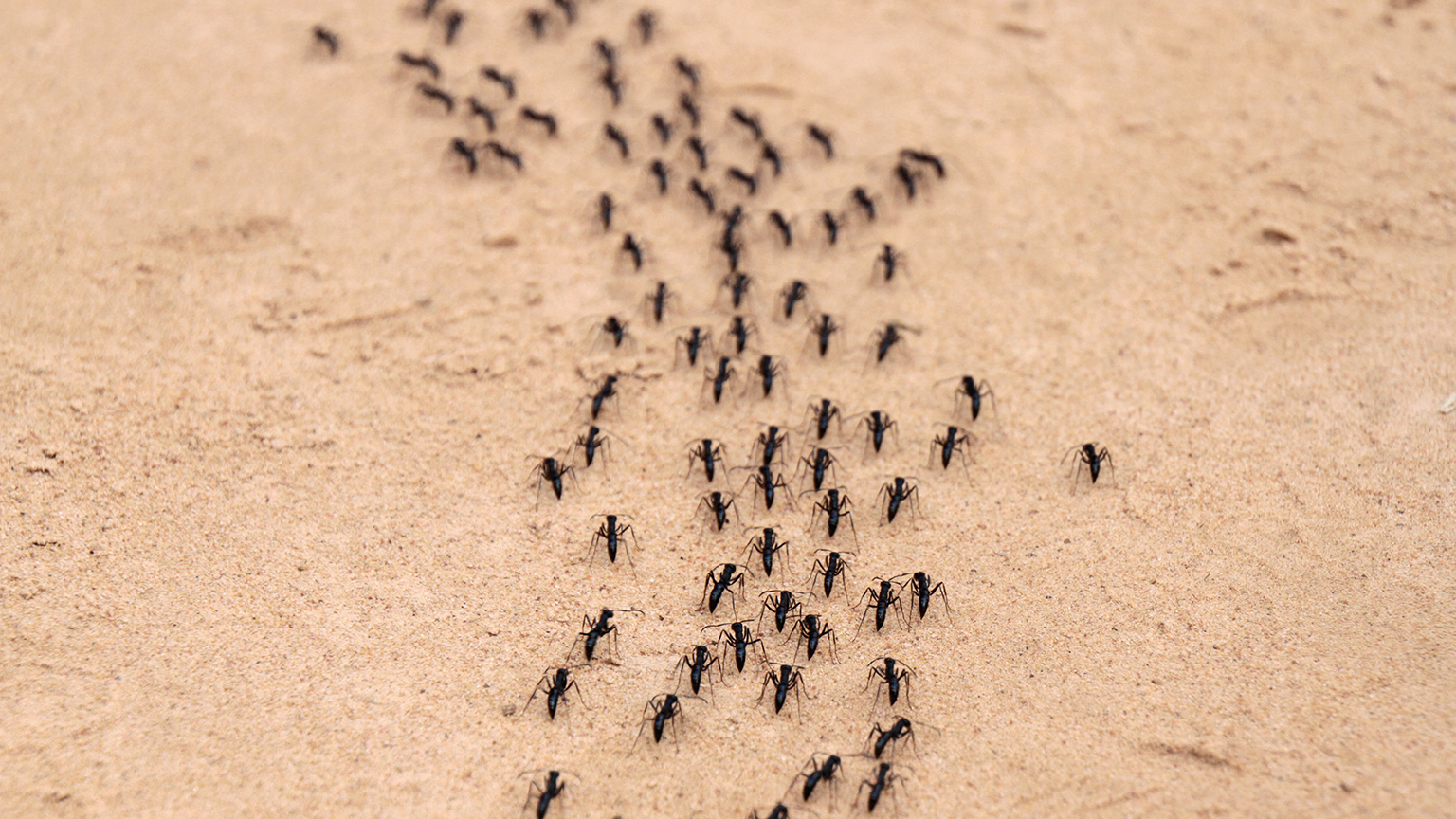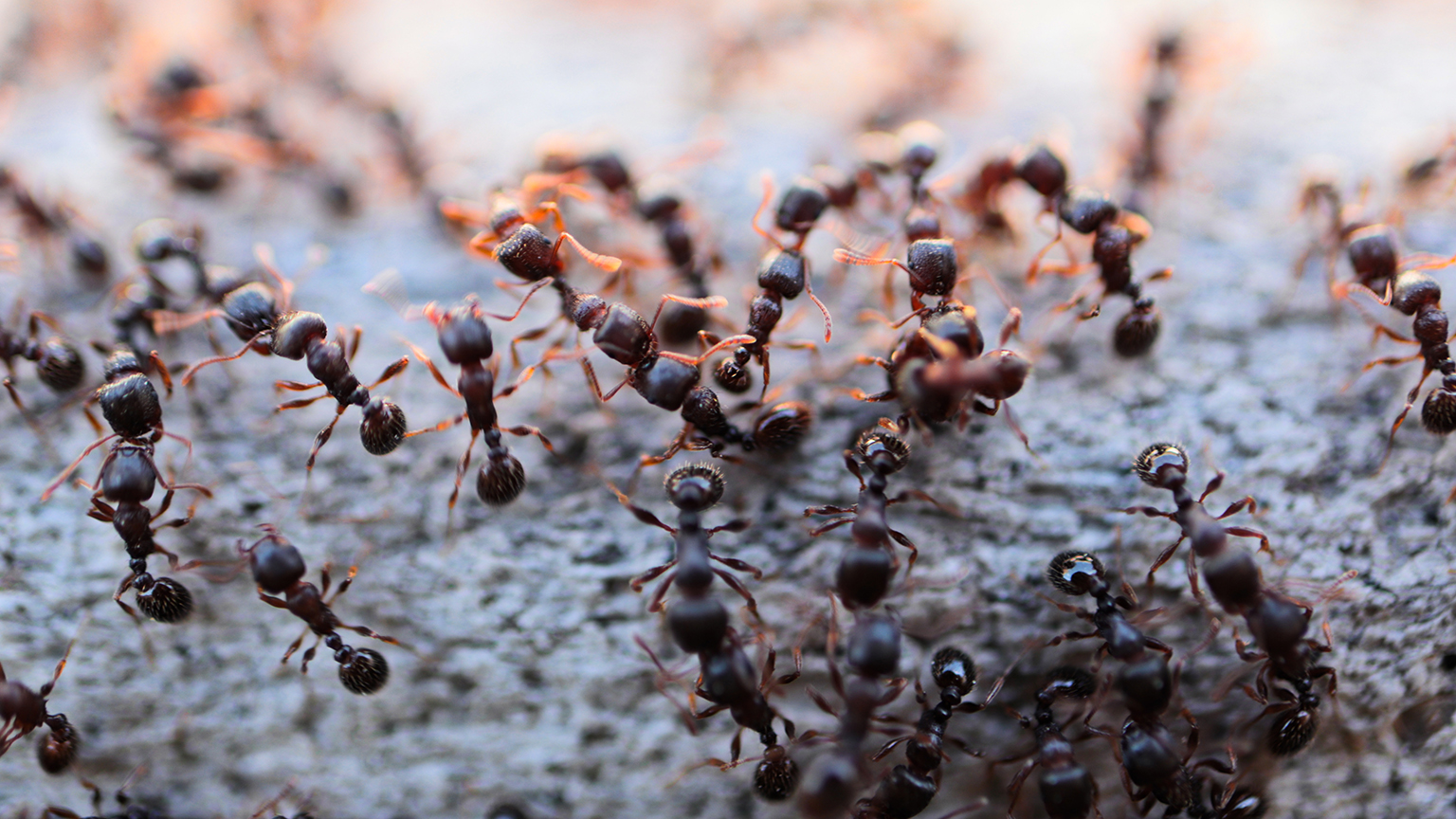More often than not, if you see live ants in your home, you’re already dealing with an ant infestation!
There are many different methods to getting rid of ants inside or outside your home, including do-it-yourself tactics or professional ant treatments. Most everyone will try to remove ants themselves before hiring a professional. However, we always recommend hiring a professional so that you can help get rid of ants and keep them away for good!
If you’re looking for tips on how to get rid of ants yourself, we’ve included some popular DIY solutions and explain why they don’t work as well as a professional treatment.
1. DIY Non-Chemical Ant Treatments
Citrus, lavender, peppermint, coffee grounds, and white vinegar are some of the natural scents that ants hate. Once you find the source of your ant problem, you can mix a solution of one part water and three parts vinegar, peppermint oil, or lavender oil, and spray over the problem area and any trails you find.
Spraying a natural solution, or sprinkling coffee grounds on points of entry like window sills and door frames can also serve as a natural deterrent to stop ants from entering your home.
Limitations To This Method
Ants are resilient and determined! By spraying a natural solution on any visible ant trails, you only remove the pheromone track the ants leave when they search for food. This will temporarily remove your ant trail, but more will quickly come to replace it.
Natural sprays are helpful as a deterrent, but getting rid of ants requires targeting the nest, which is likely located somewhere outside. Using a professional treatment with a transference effect means ants in your home will bring the treatment back to their colony outside.
2. Over The Counter Chemical Ant Treatments
Non-repellent ant sprays use a type of chemical that does not eliminate ants instantly but instead carries it back to the colony on the worker ants’ bodies after they walk through it.
This method is slow but more effective than natural deterrents to help eradicate the source of your ant problem. Ant spray should be applied to places where the ants are getting into your home, such as crevices in baseboards, windows, and doors.
Another chemical ant treatment involves finding the nest yourself and spraying it with an insecticide. This can be tricky as nests are not easy to find! Ants can build their nests almost anywhere, so it can take a fair amount of investigative work if you don’t do this for a living.
Limitations To This Method
Chemical ant sprays are not specific to ants, meaning they treat a wide variety of pests both inside and outside your home. This means over-the-counter sprays are less effective at treating an ant problem. Good ant control professionals will use a combination of chemical sprays to help treat the ant infestation at its source.
Most homeowners aren’t knowledgeable enough about how to target the specific areas that are infested with ants which can lead to a blanket spray of chemicals everywhere. This can be harmful to you, your children, and your pets.
A professional exterminator will know how to track down the nest and have the product knowledge to get rid of your ant problem quickly and safely. We understand that when it comes to chemical ant treatments, less is more.
3. Pouring Boiling Water Over Ant Mounds
If you think your ant problem originates from a specific nest outside your home, you can try pouring boiling water on the ant mound. However, this method is not as straightforward as it seems.
Ant nests can go deep underground, and to kill the colony, you have to target the queen, who is usually hidden deep within the nest. Many ant control blogs will tell you you need to use at least 1-2 litres of water and may require several attempts to penetrate the nest deeply enough to eliminate the queen.
Limitations To This Method
When you use boiling water to get rid of ants, you’re unlikely to solve the problem because you’re assuming the nest goes straight down — it doesn’t. It may work on newer nests that have not been established, but as we mentioned above, older nests can run deep.
Professionals will use a liquid pest control treatment as a non-repellent (meaning ants will feast on the liquid and carry it throughout the colony). If we’re dealing with a large and uncontrollable ant colony, we may use foam because it is sure to get everywhere within the colony.
4. Using Ant Baits
Ant baits can be the most effective DIY method to get rid of ants. Some use a transference effect that professional pest control technicians prefer, meaning the ants bring the poison back to the nest. However, others may just use repellents or a combination of the two. The effectiveness will depend on the type of bait. As we’ve already learned, repellents don’t work for ants. They’re incredibly resilient and will continue trying a new path where they won’t be exterminated.
Most ant baits are usually made of a sugary carbohydrate mixed with something toxic to ants. A common example is sugar and boric acid (which is highly toxic to ants and harmless to humans and animals in small amounts).
Baits with a transference effect should be placed in areas of high ant traffic so the worker ants can access the bait and carry it back to the nest, slowly poisoning the entire colony.
Here are some additional ant baiting tips to help make your ant baiting successful:
- Leave the ant trails alone. These are the tracker trails that will lead the ants to your bait, so use them to your advantage!
- Ensure the ants have no access to any other food source. Otherwise, they may not take your bait.
- Once the ants are gone, spray any trails with a natural deterrent to help erase any tracker trails left behind for new ants to find.
Limitations To This Method
Using ant baits could be effective in getting rid of a single colony, but quite often, there are more nests, making it difficult to get rid of your ant problem completely.
If you’re baiting inside your home, you’re not going to win. You’re already dealing with a large infestation! What’s growing outside is always greater than what’s inside, which means you’ll continue to just eradicate what’s coming in rather than treating the source.
Baiting can also take weeks to take effect, or even months if there are multiple colonies. So, although baiting can work, a professional ant inspection and control treatment is still the most effective way to find and get rid of ants for good.
5. Cleaning Up Your Home
Ants enter our homes searching for food, so the best ant prevention technique is making sure they do not have a food source. Keep your counters clean, vacuum and sweep regularly, and keep all food in tightly sealed containers.
Regularly using a cleaning spray mixed with lavender or peppermint oil will help deter ants and have the added bonus of leaving your house smelling fresh and clean.
Lastly, make sure to keep your pet’s food dishes off the ground and clean up after they’re done eating. This usually requires setting them on a feeding schedule (if possible).
Limitations To This Method
A tidy house helps, but it won’t keep ants away — especially outdoors. Remember that ants are beneficial garden insects, so it may be best to leave an outdoor colony alone. However, if you need to get rid of an ant problem, it is always best to seek professional advice if you want to remove them quickly and safely!
Ready to get rid of ants quickly and safely?
Our team has been working to get rid of pests on the Sunshine Coast, Caboolture area, and North Brisbane for over thirty years. We know how difficult it can be to get rid of ants and that’s why we recommend you consult a professional to take care of your ant problem for good.
Learn about our ant control process and contact us with any questions you may have. We’re here to help!


